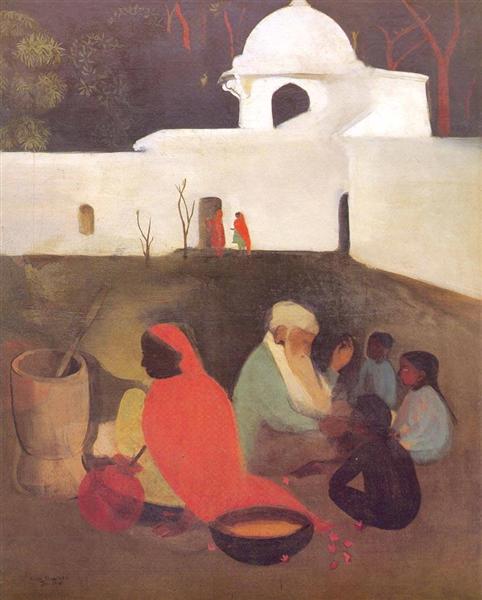View basket (0 items $0.00)

There Are More Than Five Yamas
Although many of us have been told that the Yoga Sutras of Patajanli is the single authoritative text on yoga, this isn’t really true. As yoga evolved over thousands of years, there were many different schools of yoga besides the school described by Patajanli (now referred to as “classical yoga”) and they differ quite a bit from each other. They can differ entirely in what the goal of practice is, what their views of what enlightenment is, and the number of branches that yoga practice should include. And many of these other schools also had their own very influential texts! In fact, throughout the history of yoga in India, at times, some of those other texts were considered more influential than the Yoga Sutras. One area where the various yoga texts often differ is in their lists of Yamas (the ethical practices of yoga).
 There are so many more than the basic five listed in the Yoga Sutras (non-violence, truthfulness, not stealing, non-hoarding, and celibacy). In fact, yoga teacher and scholar Richard Rosen shared a list of 150 Yamas with me! I’m not allowed to share this list with you, but it will appear in his forthcoming book from Shambhala Publications called Yoga by the Numbers.
There are so many more than the basic five listed in the Yoga Sutras (non-violence, truthfulness, not stealing, non-hoarding, and celibacy). In fact, yoga teacher and scholar Richard Rosen shared a list of 150 Yamas with me! I’m not allowed to share this list with you, but it will appear in his forthcoming book from Shambhala Publications called Yoga by the Numbers.
About Those Other Yamas
Personally, I have been very interested in some of the “other” Yamas from different yoga texts, probably inspired by the very moving post that Ram Rao wrote for the blog, Yoga for Times of Change, about the Yama Kshama (forgiveness). I concluded that we’re missing out on some valuable practices and ideas if we focus only on the five Yamas in the Yoga Sutras.
Although since then I’ve written about a few of these “additional” Yamas, I thought today I’d introduce you to a very influential yoga text, the Yoga Yajnavalkya, and walk you through the 10 Yamas that this text includes. I’m picking this list of 10 because it is my understanding that this list of 10 Yamas was (and may still be) more common in India than Patajanli’s five Yamas and that this same list appears in numerous Hindu texts including the Upanishads as well as the Hatha Yoga Pradipika (the essential text on Hatha Yoga) as well as the Yoga Yajnavalkya.
 In this list, I’m using the definitions from the translation of the Yoga Yajnavalkya by A.G. Mohan with Ganesh Mohan. The first four are the same as four of the Yamas in the Yoga Sutras. For the other six, I’ll add some links to where you can find out more information on our blog if there is a post about this.
In this list, I’m using the definitions from the translation of the Yoga Yajnavalkya by A.G. Mohan with Ganesh Mohan. The first four are the same as four of the Yamas in the Yoga Sutras. For the other six, I’ll add some links to where you can find out more information on our blog if there is a post about this.
10 Yamas from the Yoga Yajanvalkya and Other Texts
1. Ahimsa: “Refraining from harming (creating suffering for) any living being, at all times, by thought, word, or deed is said to be Ahimsa by yogis.”
2. Satya: “Satya is not merely speaking the plain truth, [but to say] that which is beneficial to all beings.”
3. Asteya: “According to sages who have realized the truth, absence of desire for others’ possessions is said to be Asteya.”
4. Brahmacharya: “Renouncing sex, in thought, word, or deed, at all times, all places, in all states [of mind and body], is considered Brahmacharya for those in the Brahmacharya-Asrama, for monks, for those committed to Brahmacharya throughout their lives, and for those who are in the Vanaprastha-Asrama (the third stage of life when one retires to the forest). For householders, intimacy with their wives, in the prescribed period, in the proper manner, is considered Brahmacharya. For everyone, serving one’s guru at all times is [also] said to be Brahmacharya.”
5. Daya: “Daya (kindness, compassion) is to be kind to all beings everywhere.”
6. Arjava: No hypocrisy, sincerity. [Mohans’ translation included this in the list but did not provide a definition].
7. Ksama: Equality toward all things, favorable or unfavorable, is said to be Ksama (forbearance, forgiveness) by scholars well versed in the Vedas.
8. Dhrti: “When wealth is lost or gained, when one is separated from loved ones or joined with them, steadiness of mind in [such] situations is Dhrti.” Comment: I meant to write about this in my forthcoming book Yoga for Times of Change, but, hmmm, in the end, I didn’t get around to it.
9. Mitahara: “A monk may have eight mouthfuls of food [daily], those in Vanaprastha-Rama, sixteen mouthfuls, a householder thirty-two, and students as much as they wish. This is Mithara (controlled diet) for them, and for others [in general], it is eating less.” Comment: It was believed back then that restricting your diet could help reduce the desire for food and the pleasure in eating, which was considered to interfere with reaching a state of enlightenment. Now we know that can lead to eating disorders and other problems. Fortunately, we can all just consider ourselves “students” and eat as much as we wish.
10. Sauca: “Sauca (purity) is said to be of two types: external and internal. External purity [is achieved] by cleansing agents like water and [a kind of fragrant] earth (like soap). Purity of the mind is evidenced by the Dharma (ethical values) the person follows and, and the internal quest for self-knowledge (spiritual search).” In the Yoga Sutras, this is one of the Niyamasn (daily practices).
Reprinted with permission from Yoga for Times of Change.

Nina Zolotow, RYT 500, the author of the forthcoming book “Yoga for Times of Change” and the Editor-in-Chief of the Yoga for Healthy Aging blog, is both a yoga writer and a yoga teacher. She trained to be a yoga teacher at The Yoga Room in Berkeley, California, has studied yoga therapy with Shari Ser and Bonnie Maeda, and is especially influenced by the teachings of Donald Moyer. She also studied extensively with Rodney Yee and is inspired by the teachings of Patricia Walden on yoga for emotional healing. Her special area of expertise is yoga for emotional well-being (including yoga for stress, insomnia, depression, and anxiety) and she teaches workshops and series classes on yoga for emotional well-being, stress management, better sleep, home practice, and cultivating equanimity.
Nina is the co-author with Baxter Bell of Yoga for Healthy Aging: A Guide to Lifelong Well-Being and co-author with Rodney Yee of Yoga: The Poetry of the Body (with its companion 50 Card Practice Deck) and Moving Toward Balance. She is also the author of numerous articles on yoga and alternative medicine.
Featured Courses









